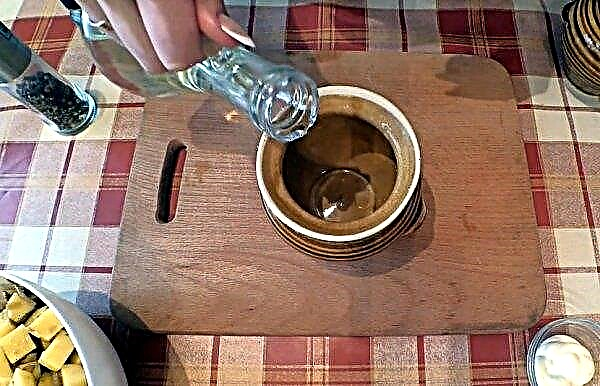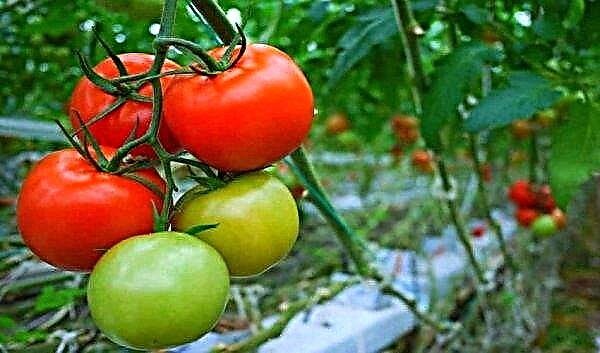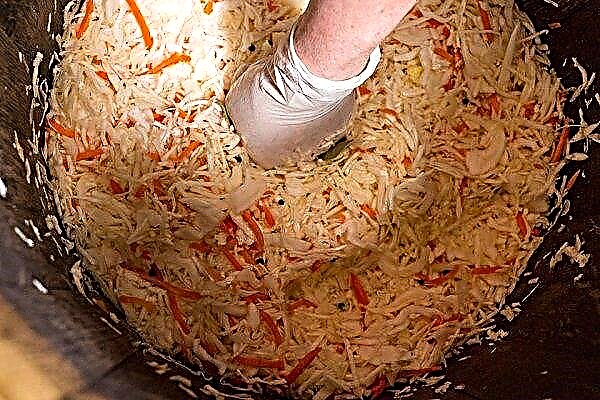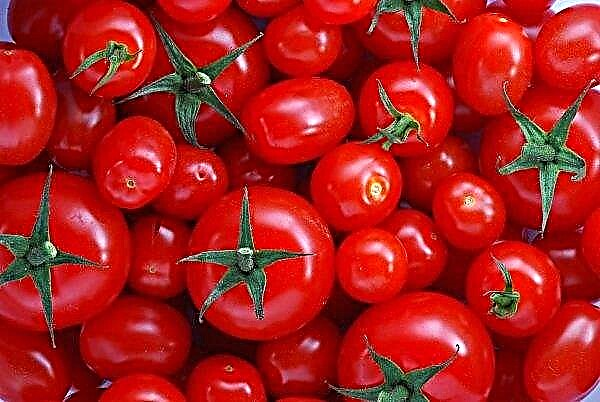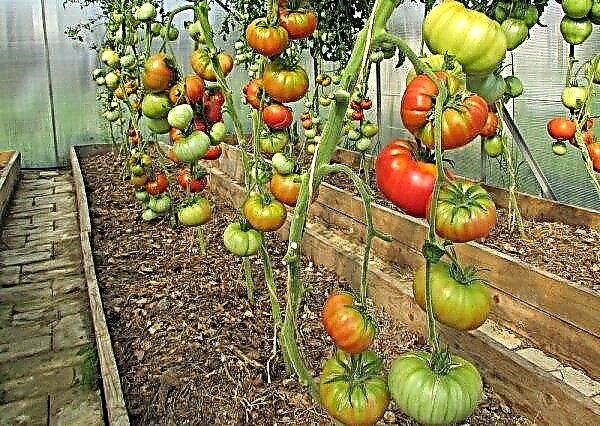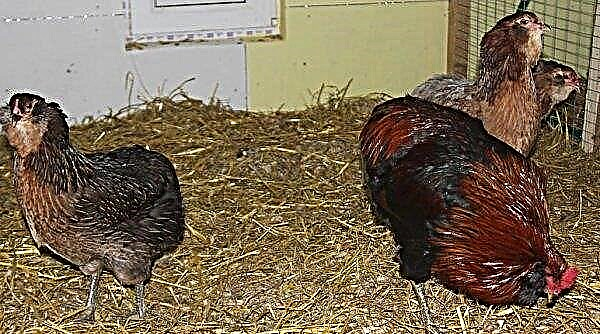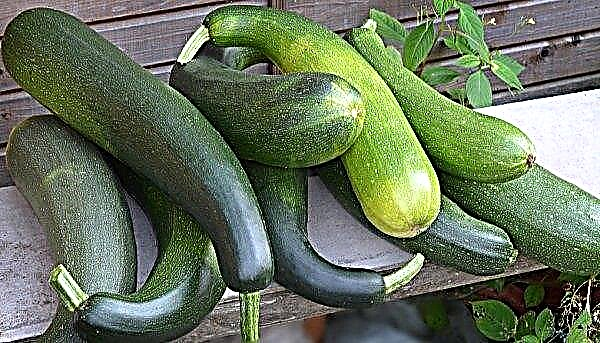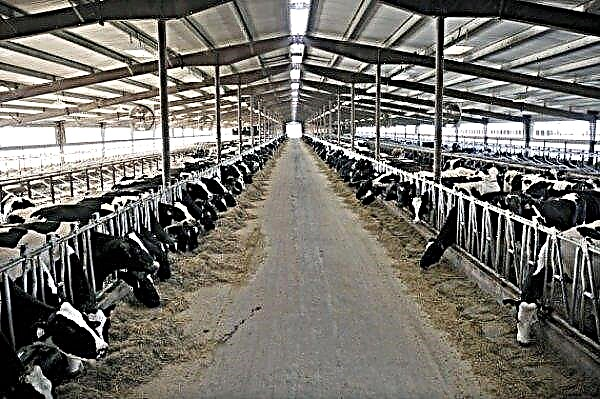Today, you can get confused even among the many popular types of tomatoes to grow some at home. This article will help you understand why Blagovest is considered an ideal option for these purposes.
Grade description
The main characteristics of Blagovest tomatoes are obvious:
- early ripening variety (fruits appear on day 105);
- bush determinant (stops growing after 4-5 formed brushes), but quite high (up to 1.8 m);
- suitable for both greenhouse conditions and open ground;
- many branches on which a large number of fruits are formed - 6-10 pieces;
- the amount of foliage is average, it is gray-green in color, oval;
- fruits are red, medium sized, round, with juicy pulp, weighing about 100 g;
- the variety is resistant to various diseases and insect pests.
This view combines many useful features.

Advantages and disadvantages
- The reasons why this variety is beneficial to grow at home is enough. This may include:
- resistance to most diseases;
- the opportunity to harvest a good crop;
- the fruits tolerate transportation well;
- almost all seeds germinate;
- fast germination, the formation of branches and fruits.
- Cons of breeding varieties are:
- small size of the fetus;
- because of the height of the plants, they require mandatory garter;
- grow poorly in open ground.
If you grow them in greenhouse conditions, then the last drawback can be avoided.
Sowing seeds for seedlings
A very important stage in the cultivation of the crop is the initial one, since the whole further process depends on it. Sowing seeds for seedlings determines what quality and in what quantity there will be future seedlings.

The timing
Planting seeds for germination must begin in early March (continues until its middle). This time is the most favorable, since air temperature and season favorably affect the speed and quality of future sprouts.
Did you know? In the Middle Ages, it was believed that a tomato is a poisonous plant, and it was grown for cultural purposes.
The soil
The soil should consist of high-quality soil and fertilizer; humus is an ideal eco-friendly option. Care should also be taken to disinfect the soil, as infected seeds or plant particles from the previous crop may remain in it, which can provoke new diseases.
There are several ways to disinfect:
- Cold. In fabric bags, the ground is taken out in a 15-degree frost for 3 days (repeat the procedure several times with a break of a week). The disadvantage of this method is that it does not kill late blight bacteria.
- Baking in the oven. In a large container, mix the earth with boiling water, then pour onto a baking sheet and bake for 30 minutes at a temperature of 70 ° C.
- Using special tools. The most gentle and safe option is a solution of potassium permanganate (2.5 g per 10 liters of water). You can turn to the preparations "Extrasol", "Fitosporin".
All these procedures will help to avoid future infection of plants.

Capacity for growing
You can use for planting both boxes and pots. It is recommended to choose more environmentally friendly options (for example, wood and clay), but plastic ones will do.
Seed preparation
First of all, it is necessary to select seeds with mold, rotten or with black dots. Then suitable seed is decontaminated with a weak solution of potassium permanganate, in which it is placed for 15 minutes. After you need to rinse the seeds with warm water and dry from moisture.
Did you know? The homeland of tomatoes is Peru, where they were grown long before the Europeans.
It is also advisable to use growth stimulants that improve plant immunity and accelerate development. These drugs are different, it is necessary to apply them in accordance with the instructions. In a solution of a growth stimulator, the seeds are kept for several hours.
Sowing seeds
It is necessary to sow seeds to a depth of about 1.5 cm, otherwise it will be difficult for them to shoot. Alternatively, you can sprinkle the seeds directly on top of the soil, and then sprinkle on top of the ground and moisten.

The planting scheme is as follows: make a recess of 1 cm, the distance between the rows is about 3-4 cm, place the seeds at a distance of 2 cm from each other. After sprinkle with soil on top.
Seedling Care
The basis is watering. It is advisable to spray it several times a week or as the soil dries from a spray bottle or watering can. The temperature is not lower than 25 degrees Celsius. You can cover the drawers or pots with film and put on a window or other bright light source.
Important! If the air temperature is above 35 degrees Celsius, the sprouts can dry out even with heavy watering
The process of fertilizing the soil is not always necessary, since the soil mixture often already contains humus.
Seedling hardening
On the 5th day after germination, you can start hardening seedlings, gradually lowering the temperature by 2-3 degrees. This must be done, because the conditions in the open ground are very different, and weather conditions affect the condition of plants even in the greenhouse.

Planting seedlings in a permanent place
Since “evangelism” is considered to be more of a greenhouse variety, it is necessary to take into account the height of the greenhouse, since tomatoes are high and problems can arise. The layout is as follows: 3 bushes per 1 square meter. Seedlings should be planted in a permanent place at the age of tomato about 43 days.
Growing Features
Particular attention should be paid to the care of seedlings, as these are not fully formed plants, and they have not yet become stronger. It is important to know how to properly care for Blagovest tomatoes.
Watering
Watering is necessary once a week, but plentifully, since tomatoes require a large amount of moisture. The main thing is to try not to wet the tops of the plants. The type of irrigation can be used either manually, using a watering can, or automated or drip.
Top dressing
The first top dressing is recommended to be carried out on the 15th day after transplanting into the ground, although some argue that this is recommended to be done immediately. The most popular are natural fertilizers in the form of humus, or "green tea" - a mixture of various grass crops, weeds, nettles, mullein and ash. Nitrogen fertilizers are also suitable (for 10 liters of water about 80 g). For the entire period of growth, it is necessary to carry out 3-4 dressings.

Stepson
2 stems are left on each plant, all stepsons are torn off (except that under the brush). This procedure is carried out closer to the transplant and allows you to correctly form a brush.
Soil care
Since, basically, this variety is grown in greenhouses, regular ventilation is necessary, which will contribute to the enrichment of plants with fresh oxygen and protect it from high temperatures. After watering, the soil is loosened or mulched (spread hay, sawdust on the beds) so that the moisture does not evaporate.
Important! With high humidity in the greenhouse, plants can develop fungal diseases.
If you resort to one of these methods, you can do without loosening and watering at the same time. Since tomatoes require a maximum of minerals and vitamins from the ground, it is necessary to weed it from weeds, because they feed on this.
Bush tying
For Blagovest tomato, tying is a must, because tall plants have difficulty managing the weight of the fruit on their own. You can tie it to the support of any material using ropes, threads or fabric.
Preventative treatment
As mentioned above, tomatoes are resistant to various diseases, in addition to late blight, therefore, for prophylaxis, it is necessary to treat plants 2 times per season with a light solution of potassium permanganate, as well as disinfect seeds and soil. The variety is resistant to various pests, but in order to prevent their occurrence, it is necessary not to fill and not overheat the plants.

Harvesting
Tomatoes are picked in red or pink ripeness, because inside they are ripe. You can store them at home, and they themselves will ripen.
It can be concluded that Blagovest tomatoes are a popular species because it combines resistance to diseases, high productivity, early ripening. To get a good result, you need to pay attention to each stage of growing tomatoes of this variety.

